With so many social media options out there, it can be hard to know which one(s) are best for your business. Each platform is unique, offering advantages and disadvantages over every other social media marketing option. With a brief overview of your social media options, however, you’ll be equipped to make the best choice for your business.
Remember, you know your business best. Knowing what each platforms offers will help you choose if it is right for your business and your audience.
Facebook
What sets Facebook apart
Facebook’s prevalence. When people think “social media,” they usually think Facebook. With 1.67 billion users, it’s become integrated not only in the lives of Americans but individuals around the world. And it’s prevalent among marketers, with 93% of social media marketers using Facebook for their organization.
How individuals use Facebook
A main motivation to be active on Facebook is relational: connect with other individuals and organizations you care about (or at least, show a mild enough interest in you’ll be fine reading an update from). Users can range from the grandparent using Facebook occasionally to see photos of their grandkids to the young adult using Facebook daily to stay in touch with friends around the world and organizations championing their favorite causes.
How marketers can use Facebook
 Facebook done well can achieve so many of the benefits of social media marketing: relationship building, brand awareness, selling of products/services, etc. To gain these benefits, marketers need to continually post content. But quality of quantity is key (Facebook’s newsfeed algorithm results in every post seen only by a fraction of your total audience, the better quality Facebook deems your post the more people will see your post). Marketers can use Facebook to humanize the brand and interact with customers. Keep in mind that business posts will appear in people’s news feeds among emotional posts from their loved ones (think wedding photos, graduation photos, etc). You don’t want to post dry sales posts. You want to create posts that individuals will want to read-because they’re entertaining, engaging, etc.
Facebook done well can achieve so many of the benefits of social media marketing: relationship building, brand awareness, selling of products/services, etc. To gain these benefits, marketers need to continually post content. But quality of quantity is key (Facebook’s newsfeed algorithm results in every post seen only by a fraction of your total audience, the better quality Facebook deems your post the more people will see your post). Marketers can use Facebook to humanize the brand and interact with customers. Keep in mind that business posts will appear in people’s news feeds among emotional posts from their loved ones (think wedding photos, graduation photos, etc). You don’t want to post dry sales posts. You want to create posts that individuals will want to read-because they’re entertaining, engaging, etc.
Twitter
What sets Twitter apart
The limit to post length. Users can only send posts with 140 characters or less. This helped Twitter become a place where users expect short snippets of information among a continual stream of posts.
How individuals use Twitter
A main motivation to be active on Twitter is informational: gain short and succinct pieces of information from individuals and organizations relevant to your life.
How marketers can use Twitter
 Twitter is a great tool to direct individuals to your website. In this way you can think of Twitter and your website like a news story. The headline and the lead are the Twitter post: it draws you in and provides just enough information you know what you’ll be reading about. The body of the article is your website post: the substance and entirety of what you want your audience to read. While posts can be great at directing individuals to your site, not every post needs to. Some posts can be a short story or message in of themselves. Twitter is also a way of getting your posts “categorized” under relevant topics through the use of hashtags. Users can search with a hashtag to find relevant posts on that topic. Ideally, they will see your post, discover your organization, and become a consumer of your social and web content and your services/products.
Twitter is a great tool to direct individuals to your website. In this way you can think of Twitter and your website like a news story. The headline and the lead are the Twitter post: it draws you in and provides just enough information you know what you’ll be reading about. The body of the article is your website post: the substance and entirety of what you want your audience to read. While posts can be great at directing individuals to your site, not every post needs to. Some posts can be a short story or message in of themselves. Twitter is also a way of getting your posts “categorized” under relevant topics through the use of hashtags. Users can search with a hashtag to find relevant posts on that topic. Ideally, they will see your post, discover your organization, and become a consumer of your social and web content and your services/products.
Linkedin
What sets Linkedin apart
The targeted audience. Everyone on Linkedin is either a current or aspiring professional. This specific nature of its audience results in content creation that tends to see an industry or career slant to it. And because published posts are tied to individuals’ professional profile, the amount of spam and overly promotional posts tends to be lower than on other platforms.
How individuals use Linkedin
A main motivation to be active on Linkedin is professional: to sell yourself, network, and in some cases find new employment. Individuals follow organizations that they care about and/or that provide relevant articles that help them in improving their personal or professional self.
How marketers use Linkedin
 Linkedin is great for increasing brand awareness and acquisition. Individuals can publish articles on Linkedin that can be seen by individuals not already connected with your organization, as well as communicate within Linkedin groups (targeted communities on Linkedin, such as women small business owners). Marketers can post regular updates like they can on other social media platforms, but much of the benefit of Linkedin activity comes from article writing and group participation.
Linkedin is great for increasing brand awareness and acquisition. Individuals can publish articles on Linkedin that can be seen by individuals not already connected with your organization, as well as communicate within Linkedin groups (targeted communities on Linkedin, such as women small business owners). Marketers can post regular updates like they can on other social media platforms, but much of the benefit of Linkedin activity comes from article writing and group participation.
Google+
What sets Google+ apart
The owner. Google+ is owned by Google, and Google rewards those who use its platform. When marketers post to Google+ they reap rewards from Google, namely SEO benefits.
How individuals use Google+
A main motivation to be active on Google+ is to gain the SEO benefits as a marketer. Google+ frankly is Google’s failed attempt at creating a social media platform to compete with Facebook and Twitter. Not as many users are on Google+, but people can use it as a way to connect with other individuals who share similar interests. Individuals will follow organizations they share a connection with or that provide useful content.
How marketers use Google+
 Marketers post content to help boost their SEO. Oftentimes marketers strapped for time post their Facebook posts on Google+ as well (using a scheduling tool like Hootsuite). Because fewer people are on Google+ there is less of an expectation of organization-customer interaction. If people are willing to interact with your page, great! But usually Google+ usage is focused on posting regular content for SEO benefits.
Marketers post content to help boost their SEO. Oftentimes marketers strapped for time post their Facebook posts on Google+ as well (using a scheduling tool like Hootsuite). Because fewer people are on Google+ there is less of an expectation of organization-customer interaction. If people are willing to interact with your page, great! But usually Google+ usage is focused on posting regular content for SEO benefits.
YouTube
What sets YouTube apart
The content. YouTube is just videos. No writing messages, no posting pictures, just videos.
How individuals use YouTube
A main motivation to be active on YouTube is to find and watch videos. Some people will search for individual videos, others will follow certain users and brands. People search for a variety of videos, from entertainment-focused to informational-driven.
How marketers use YouTube
 Creating engaging videos is a great way to turn out shareable content, engage audiences, and improve SEO. YouTube is great for brand awareness given the potential of good videos being shared among individuals (remember the Ice Bucket Challenge and the money it raised for the ALS organization).
Creating engaging videos is a great way to turn out shareable content, engage audiences, and improve SEO. YouTube is great for brand awareness given the potential of good videos being shared among individuals (remember the Ice Bucket Challenge and the money it raised for the ALS organization).
Pinterest
What sets Pinterest apart
Its focus is curation and organization of content. Pinterest works like a virtual bulletin board with users able to save photos, videos, and articles from throughout the Internet to various themed boards.
How individuals use Pinterest
A main motivation to be active on Pinterest is to find articles, photos, and videos that inspire or resonate with you. Usually it’s information you can “act” on, like a how-to crafting article. Sometimes it’s information that serves as a foundation for inspiration, like a photo of a well-designed kitchen.
How marketers use Pinterest
 Like Twitter, Pinterest is a great way to direct individuals to your website. Creating pins with engaging photos and text will draw individuals in and persuade them to check out the content on your website. Pins can also be created to showcase your products and services, helping you to grow your business.
Like Twitter, Pinterest is a great way to direct individuals to your website. Creating pins with engaging photos and text will draw individuals in and persuade them to check out the content on your website. Pins can also be created to showcase your products and services, helping you to grow your business.
The social media platform(s) best for your organization depends on how your target audience uses the platform(s) and how you want to approach your social media marketing. For organizations just starting out on social media, Facebook is a great go-to because its user friendliness and potential for high marketing benefits. If you want to take advantage of one (or many!) of the social media platforms for your organization, but aren’t sure where to start, Alpine Small Business Solutions is here for you! We’d love to help you through this, or any aspect of small business building. Reach out with an email or phone call today!
 Sure, you want as many followers as possible. But the mere total number of followers does little to reflect your relationship marketing success, which is the driving motivation behind social media marketing. Total page likes show you the number of people willing to connect with your organization, but does little to reflect your effectiveness at actually reaching and connecting with them. Growing your follower count, then, should not be a driving force behind your Facebook marketing efforts.
Sure, you want as many followers as possible. But the mere total number of followers does little to reflect your relationship marketing success, which is the driving motivation behind social media marketing. Total page likes show you the number of people willing to connect with your organization, but does little to reflect your effectiveness at actually reaching and connecting with them. Growing your follower count, then, should not be a driving force behind your Facebook marketing efforts. Joining an already established group opens you up to getting your organization’s name seen by new contacts, such as leaders in your industry or potential new customers. You can showcase your value to these individuals by answering questions with your expertise or sharing valuable content from your website. Consistent quality posting can translate into new valuable connections.
Joining an already established group opens you up to getting your organization’s name seen by new contacts, such as leaders in your industry or potential new customers. You can showcase your value to these individuals by answering questions with your expertise or sharing valuable content from your website. Consistent quality posting can translate into new valuable connections. Measurement of group involvement can be done through a variety of ways, including analyzing engagement on your posts or visits to your site from links posted in the group. Metrics that come from group activity paint a more holistic picture of your marketing success than just page likes, making it a more effective analytic of your social media marketing efforts.
Measurement of group involvement can be done through a variety of ways, including analyzing engagement on your posts or visits to your site from links posted in the group. Metrics that come from group activity paint a more holistic picture of your marketing success than just page likes, making it a more effective analytic of your social media marketing efforts.

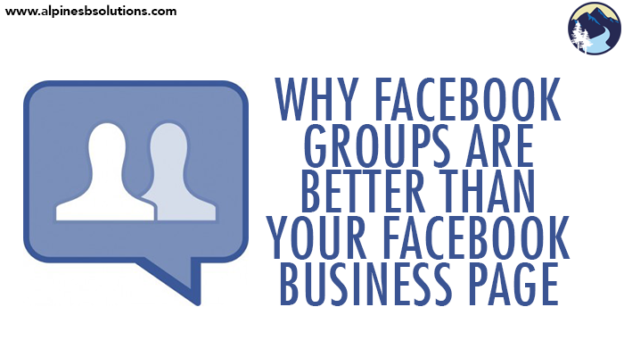

 Teleseminars came first as a way to share information between parties that are not in the same physical location. Teleseminars are fully audio based learning, with the audience listening in through a telephone or computer. Webinars, on the other hand, use audio and visual learning with the listening in through a computer. Each medium offers its own advantages and disadvantages.
Teleseminars came first as a way to share information between parties that are not in the same physical location. Teleseminars are fully audio based learning, with the audience listening in through a telephone or computer. Webinars, on the other hand, use audio and visual learning with the listening in through a computer. Each medium offers its own advantages and disadvantages. A large potential audience. Traditional seminars can cost more money to attend, plus require travel hassles and costs. This can keep individuals from attending. A webinar or teleseminar can be attended from the comfort of a home, making your potential consumer base significantly larger.
A large potential audience. Traditional seminars can cost more money to attend, plus require travel hassles and costs. This can keep individuals from attending. A webinar or teleseminar can be attended from the comfort of a home, making your potential consumer base significantly larger. Would I benefit from audience engagement/feedback in the presentation? Webinars offer tools, such as polls and chat rooms, to gain instant
Would I benefit from audience engagement/feedback in the presentation? Webinars offer tools, such as polls and chat rooms, to gain instant 
 quality. That high quality requires two things: education and experience. Before you can create a thriving social media presence, for example, you need knowledge of
quality. That high quality requires two things: education and experience. Before you can create a thriving social media presence, for example, you need knowledge of  employee performing one task in the production process. This allowed them to gain a mastery over the task and complete tasks faster than if they switched from different task to different task.
employee performing one task in the production process. This allowed them to gain a mastery over the task and complete tasks faster than if they switched from different task to different task. 34 minute blackout. Oreo’s team collaborated and created a
34 minute blackout. Oreo’s team collaborated and created a  Bringing in a team allows you to
Bringing in a team allows you to 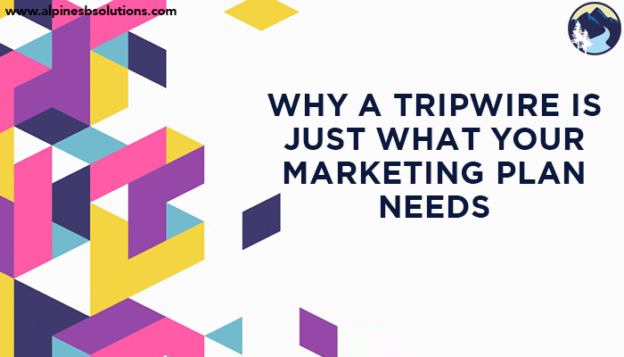
 Tripwires utilize the persuasion principle of consistency. People have a need to rationalize their behavior as consistent, whether they are aware of its impact on their decisions or not. After they agree to a small request, they become more likely to agree to a similar but larger request. They start to feel safe with your company and products. It’s why you may find yourself picking your friend up from the airport a few weeks after you agreed to pick him up for a social outing. As long as the second larger request is similar in nature to the first smaller request, it’s likely individuals will comply.
Tripwires utilize the persuasion principle of consistency. People have a need to rationalize their behavior as consistent, whether they are aware of its impact on their decisions or not. After they agree to a small request, they become more likely to agree to a similar but larger request. They start to feel safe with your company and products. It’s why you may find yourself picking your friend up from the airport a few weeks after you agreed to pick him up for a social outing. As long as the second larger request is similar in nature to the first smaller request, it’s likely individuals will comply. A tripwire also needs to be low risk. It’s great if a
A tripwire also needs to be low risk. It’s great if a  Whichever way you choose the important piece is to follow up. You have a hot buyer…check in when him. Certain tripwires are set up well for an immediate pitch (while you’re buying this dog teeth cleaning, get your dog groomed and covered with flea and tick prevention at the same visit). Others work better as a follow-up (now that you’ve completed our first course, sign-up for the entire program). Find what meets your sale best.
Whichever way you choose the important piece is to follow up. You have a hot buyer…check in when him. Certain tripwires are set up well for an immediate pitch (while you’re buying this dog teeth cleaning, get your dog groomed and covered with flea and tick prevention at the same visit). Others work better as a follow-up (now that you’ve completed our first course, sign-up for the entire program). Find what meets your sale best.
 A sales funnel is an analogy used to explain how the sales process works. It serves as a visual representation of how an individual moves from knowing nothing about your organization to becoming a loyal customer and hopefully brand evangelist for you. The mindset of a sales funnel views sales as a proactive process of making customers (as opposed to the more passive process of finding customers). The underlying goal of the sales funnel is to convert those who are unaware of your organization to happy customers by finding as many
A sales funnel is an analogy used to explain how the sales process works. It serves as a visual representation of how an individual moves from knowing nothing about your organization to becoming a loyal customer and hopefully brand evangelist for you. The mindset of a sales funnel views sales as a proactive process of making customers (as opposed to the more passive process of finding customers). The underlying goal of the sales funnel is to convert those who are unaware of your organization to happy customers by finding as many  become a customer. In situations where contracts need to be renewed or purchases made again, the customer will enter a re-evaluation phase. In some respects, they become a prospect again since they can now evaluate their other options.
become a customer. In situations where contracts need to be renewed or purchases made again, the customer will enter a re-evaluation phase. In some respects, they become a prospect again since they can now evaluate their other options.  number of individuals at each stage, the percent of customers made from leads, and the average time it takes to move a customer down the funnel. Gathering these metrics provides you with a more holistic method of comparison to gauge successful sales efforts than just sales completed. After enough time using the sales funnel, you’ll be able to see a baseline of what you can expect from your sales team. Deviations from this baseline will show you what works well or what needs to be improved in your sales strategy.
number of individuals at each stage, the percent of customers made from leads, and the average time it takes to move a customer down the funnel. Gathering these metrics provides you with a more holistic method of comparison to gauge successful sales efforts than just sales completed. After enough time using the sales funnel, you’ll be able to see a baseline of what you can expect from your sales team. Deviations from this baseline will show you what works well or what needs to be improved in your sales strategy. the numbers will always be high at every phase. The reality, however, is that the numbers fluctuate often. Using a sales funnel highlights areas that should be targeted to get the numbers to where they need to be for effective customer recruitment. If you see you’re lacking leads, you can put more resources into lead generation. If you see you have enough leads but not enough are becoming prospects or committed, you can put more resources into bettering your pitch. If you see enough customers aren’t returning when contracts need to be renewed, you can put more resources into customer service.
the numbers will always be high at every phase. The reality, however, is that the numbers fluctuate often. Using a sales funnel highlights areas that should be targeted to get the numbers to where they need to be for effective customer recruitment. If you see you’re lacking leads, you can put more resources into lead generation. If you see you have enough leads but not enough are becoming prospects or committed, you can put more resources into bettering your pitch. If you see enough customers aren’t returning when contracts need to be renewed, you can put more resources into customer service.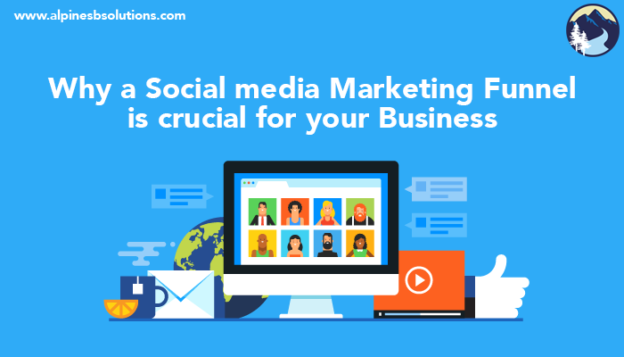
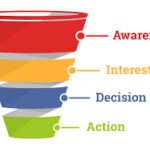 The “
The “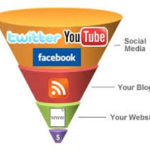 When you create a social media sales funnel, you supercharge your
When you create a social media sales funnel, you supercharge your 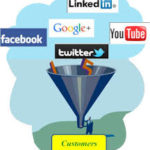 Once you know which channels to be on, you can work on generating that awareness. Facebook ads, for example, can help potential customers discover your page. When applicable, tag other organizations in your posts to help your posts show up on their followers’ pages. Cross promote your social channels through strategies like including the social links in your email signatures or newsletters.
Once you know which channels to be on, you can work on generating that awareness. Facebook ads, for example, can help potential customers discover your page. When applicable, tag other organizations in your posts to help your posts show up on their followers’ pages. Cross promote your social channels through strategies like including the social links in your email signatures or newsletters.

 year. It’ll change as unexpected expenses and outstanding situations arise, but it will help provide the
year. It’ll change as unexpected expenses and outstanding situations arise, but it will help provide the 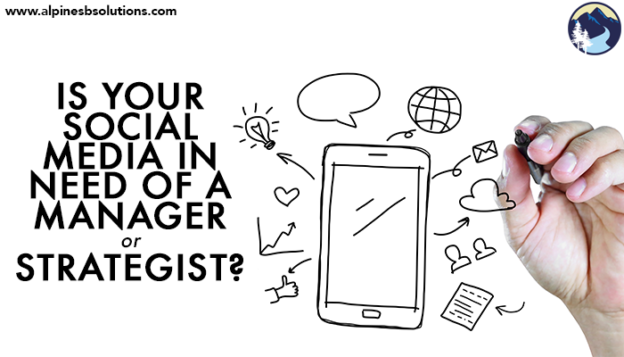
 Think of your social media as a body. Your goal is a healthy thriving body, which requires two approaches.
Think of your social media as a body. Your goal is a healthy thriving body, which requires two approaches. You also need to take a long-term approach, adopting and adapting
You also need to take a long-term approach, adopting and adapting  business is chugging along like normal, you can match that approach in
business is chugging along like normal, you can match that approach in 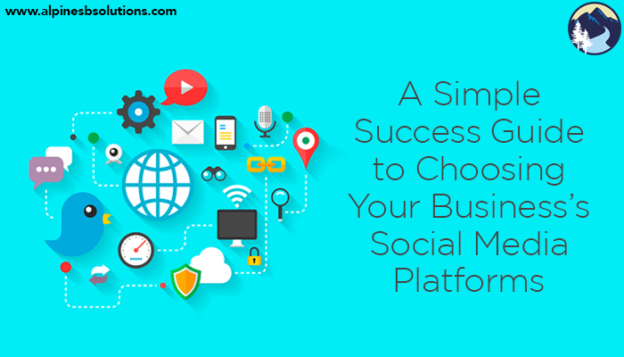

 Twitter is a great tool to direct individuals to your website. In this way you can think of Twitter and your website like a news story. The headline and the lead are the Twitter post: it draws you in and provides just enough information you know what you’ll be reading about. The body of the article is your website post: the substance and entirety of what you want your audience to read. While posts can be great at directing individuals to your site, not every post needs to. Some posts can be a short story or message in of themselves.
Twitter is a great tool to direct individuals to your website. In this way you can think of Twitter and your website like a news story. The headline and the lead are the Twitter post: it draws you in and provides just enough information you know what you’ll be reading about. The body of the article is your website post: the substance and entirety of what you want your audience to read. While posts can be great at directing individuals to your site, not every post needs to. Some posts can be a short story or message in of themselves.  Linkedin is great for increasing brand awareness and acquisition. Individuals can publish articles on
Linkedin is great for increasing brand awareness and acquisition. Individuals can publish articles on  Marketers post content to help boost their SEO. Oftentimes marketers strapped for time post their Facebook posts on
Marketers post content to help boost their SEO. Oftentimes marketers strapped for time post their Facebook posts on  Creating engaging videos is a great way to turn out shareable content, engage audiences, and improve SEO.
Creating engaging videos is a great way to turn out shareable content, engage audiences, and improve SEO.  Like Twitter,
Like Twitter, 
 you avoid too many keywords (which can make your profile a dry read). You really want to think about what your audience is looking for and write for that. Answer those questions, and use those words. Utilize a few strategies to establish the best keywords for you. First, brainstorm words and phrases likely to be searched by the individuals you want viewing your profile. Second, read through profiles of leaders in your target markets to find common keywords they use. Third, examine keywords used in job postings by your target employers. Integrate these keywords throughout your profile, from your specialties section to your link descriptions.
you avoid too many keywords (which can make your profile a dry read). You really want to think about what your audience is looking for and write for that. Answer those questions, and use those words. Utilize a few strategies to establish the best keywords for you. First, brainstorm words and phrases likely to be searched by the individuals you want viewing your profile. Second, read through profiles of leaders in your target markets to find common keywords they use. Third, examine keywords used in job postings by your target employers. Integrate these keywords throughout your profile, from your specialties section to your link descriptions.